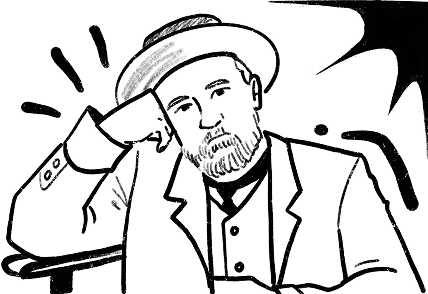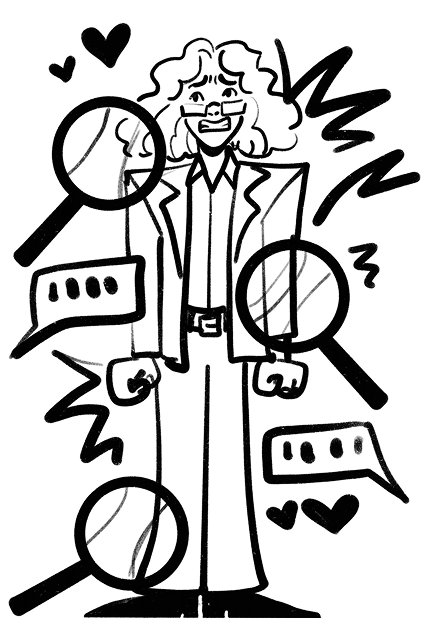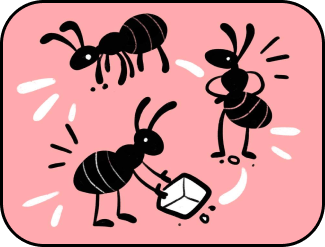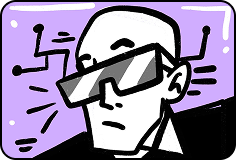Category: Materialization technologies
Don't Be Afraid of Fear: How to Use Fear When Building Your Personal Brand
“When a person realizes they are a brand, they overcome fear and begin to act”
Mark Eko, I Am a Brand. The Formula for Success
Autumn has arrived. And a pumpkin has grown in your garden. A huge, enormous pumpkin. But there’s no one to tell a fairy tale about it (no Author, no audience). The fact of this giant pumpkin’s appearance will never become an EVENT noticeable beyond the fence of your glorious vegetable patch, unless you are that very Charles Perrault, who saw the potential of a transformer in a boring vegetable and, most importantly, managed to fabulously “package” his discovery and captivate the wider public with his viral fantasy.
This troublesome “unless” has happened to you for one simple reason — the immaturity of your personal brand. A little more, and the seeds of your thoughts will never sprout into catchy quotes in your followers’ social media feeds. While you were spending your precious efforts watering and weeding your pumpkin plantation, your self-PR campaign faded. Withered away. The culprits are the scarecrows that have overrun your personal space. In some cases, because of them, the personality package with the concise label of your name remains hermetically sealed.
This version of brand intrigue, by the way, is quite viable. Look how confidently the mysterious Labubu toy marches across the world of childhood — a toy you can meet only in complete privacy, after opening the purchased box. However, if you are far from the idea of positioning yourself in such a toy-like manner, we offer a debriefing of failed flights. Are the fears that clip the wings of your individuality really so terrifying?
Getting to Know Your Inner Scarecrows
“Many people overestimate what they are not and underestimate what they are”
Malcolm Forbes
We are all afraid of something, to some degree. Even the master of horror Stephen King, after compiling an impressive list of his own fears (from darkness to the inability to write), came to the sobering conclusion: “I’m afraid of everything.” Absolute fearlessness—Urbach-Wiethe disease—is an extremely rare genetic pathology.
That was the scary news.
Here is the other: being afraid is useful! Fear stimulates personal growth. Alexander Kuprin, in “The Garnet Bracelet,” shared a valuable observation on the productive use of one’s apprehensions: “Everyone is afraid in the same way. Only one person falls apart completely from fear, while another keeps themselves in hand. And you see: the fear itself always remains the same, but the ability to control oneself grows with practice: hence, heroes and brave men are made.”

Any apprehension is a manifestation of the body’s defense mechanism against adverse external influences. This protective mechanism was described in the early last century by the American psychologist Walter Cannon through the memorable formula “fight or flight.” This is precisely how the body’s shield looks in the face of both physical and mental danger.
Now that you are armed, you can heroically look your fears in the face.
Scarecrow No. 1.

The biggest one, embodying the Others. Those whom Jean-Paul Sartre succinctly called hell. Those who make frightened faces as soon as some extraordinary “I” wants to separate from the mass of its peers. This fear is imaginary, lacking any real experience of society’s rejection in reality. An uncontrolled stream of consciousness paints terrifying pictures. For instance, neighbors will point fingers at your customized retro car. Or the gray, mundane office team will react skeptically to the cut of your suit made from eco-friendly mushroom leather.
What to do?
RUN!
No, not from yourself. Run from others.
Other people’s brands have turned the heads of many “mere mortals.” An unattainable number of followers, an incredible number of zeros in monthly income create the false illusion that one lacks the strength to climb the pedestal of social recognition and acceptance. A self-made scarecrow hinders the promotion of your “I.” The fear of being thrown off the public Olympus by the crowd creates an overwhelming desire to preemptively level down to zero—that is, to be like everyone else. The personal brand of an average person, sharing a chaotic assortment of common values, is replicated on a pandemic scale: reposting others’ content, wearing replicas of famous brands. This is not as safe as your inner chameleon imagines.
Merging with the crowd does not satisfy the inner need for self-presentation. In the overalls of a gray mouse, you will engage in self-flagellation, tormented by Dostoevsky’s question: “Am I a trembling creature or do I have the right?” Break away from those pursuing you. It’s enough to turn off the main path of worn-out fashion and viral trends. The detour to the construction site of your personal brand might be shorter. Becoming a guru of reproducing “hackneyed” pumpkin pie recipes is harder than, for example, discerning special symbolism in the mysterious number of the vegetable’s ridges and promoting the personal brand of a person who reads the secret signs of the vegetable universe. In time, you will have your own followers who turned off the common highway. They will start counting the stripes on a watermelon. The editorial team of “THE GLOBAL TECHNOLOGY” magazine is already considering deciphering this berry code.
Scarecrow No. 2.

Smaller than the previous one. But also very frightening. It embodies your fear of the failed brand from your distant past rising from the ashes.
For example, from a lonely and therefore sad childhood. Our first communities have few leaders: the Caregiver (teacher, parent) and the Favorite. A child who fails to enter the closed, narrow circle of trust of these individuals receives that very wound of rejection, which they will have to lick on their own. Teased as a “nerd” at school. At home, prophesied a swift career as a street sweeper. Rare self-esteem can withstand a massive attack from haters agitated by your uniqueness. What psychologists call childhood trauma continues to cripple the vulnerable “I” of the adult. An externally imposed positioning as an anti-hero, in a moment of weakness, drives the victim into a shell. In this case, a personal brand resembles a craft paper bag: inconspicuous, universal, and saying nothing.
Surprisingly, it is this very childhood trauma that can, like a spring, work in the opposite direction — push you to the surface.
What to do?
FIGHT!
The monsters under your bed will not withstand the brilliance of the halo above your head, which can easily be rendered with branding tools. In this case, revanchism means shifting from a survival strategy to a “live as I want” course. The ugly duckling has grown up and is ready to overshadow ordinary swan individuals with the scale of its personality. Let your peculiarities, which once repelled myopic surroundings, become the accents of a rapidly growing personal brand. Scale them to the point of exclusivity. Thus, the glasses typically associated with a “nerd” can be chosen with the inventiveness of a style icon like Iris Apfel, who saw the design of an ultra-fashionable accessory in lens frames. The case of the famous street sweeper from Ufa, Yuri Vetlugin, is another reason to reassess brand values. For motivation, it’s worth watching the biopic “Yura the Street Sweeper” (directed by Vitaly Dudka, 2023).
Use your fears before someone else beats you to it. Before they tell your pumpkin story in their easily recognizable voice, like Charles Perrault did. For instance, collective cinematic and tourist consciousness has branded wordless sharks. Huge, bloodthirsty, and spontaneously aggressive. A beach monster that belongs only in “Jaws” or “The Shallows.” In vain, zoologists appeal to common sense and facts. There are more than 500 species of sharks in the world, and they are all very different. The smallest one would fit in your palm without causing harm. Humans, as a ready-made breakfast, do not interest these fish at all (not “tasty” enough). Attacks on swimmers occur due to a tragic combination of circumstances, including when a shark “makes a mistake” in choosing its prey. The image of a ruthless predator, widely circulated by thrillers, is taken seriously only by those familiar with the situation beyond the screen. The minds of the rest are dominated by the thriller illusion.
Afraid that you will suffer the shark’s fate and someone will fabricate your false brand? You are right to be. Run from coaches, buyers, marketers, and all those who target your “self” as expendable material for achieving their own goals. The self-promotion of these “mentors” is built on retouching your fears, which they, with the inventiveness of Charles Perrault, call “pains.” As a result, their brands are resilient, while the “patient”-“clients” remain a faceless gray mass.
A brand is a personal story that you need to live for yourself. Its best packaging is not a craft paper bag, but a velvet case: it carefully preserves what is intimate, is recognizable in its uniqueness, and opens when needed.
Scientists have decoded the human genome. We’ve decoded the genome of interest. Only pure science and facts.
Thank you!




